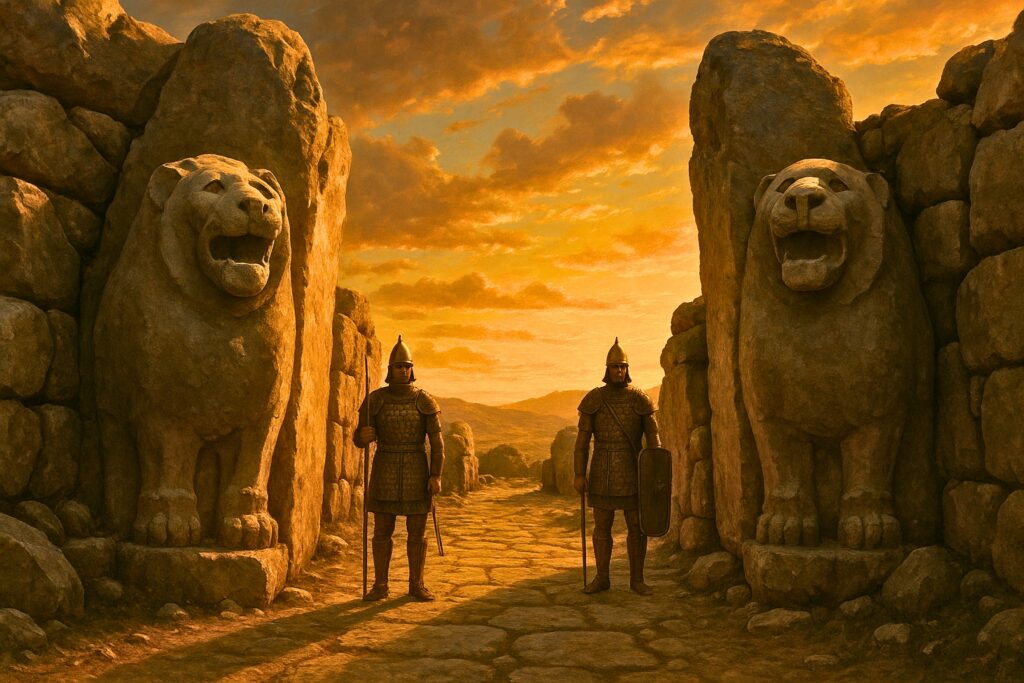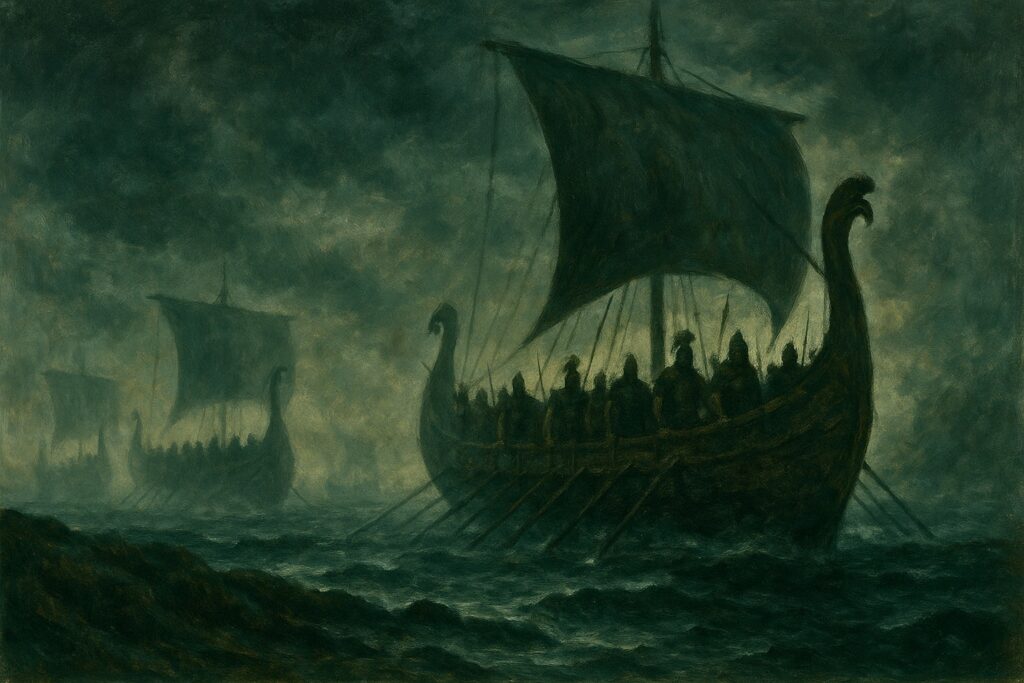I often think of history not as a set of dates, but as a great delta of rivers—mighty currents of civilization flowing through time. I’ve stood on the imaginary banks of this delta and wondered about them all. Some rivers, like those of Rome or Egypt, are still visible, their legacies shaping the landscape of our modern world. But others vanish, their channels running dry so completely that we forget they ever flowed at all.
This is the story of the Hittites, a civilization of culture and power, who once carved its way across the ancient world like a mighty river, only to seemingly disappear into the sand. For centuries, their name was a whisper in biblical passages, a footnote so obscure that many scholars dismissed them as folklore.
“How could a civilization that challenged the pharaohs and ruled a vast empire vanish so completely?”
This isn’t just a historical question; it’s a detective story. The trail doesn’t lead to a modern crime scene, but to the windswept plateau of modern-day Turkey. It is a journey into the ruins of a lost empire, a search for the echoes of vanished power. Together, we will ask the questions at the heart of this mystery: who were the Hittites, and what truly became of them after their world fell apart?
The Echoes in the Stone: A Journey to Hattusa
To find the heart of the Hittite Empire, we must go to a place of breathtaking desolation and grandeur: the ancient city of Hattusa. Perched on a rocky outcrop in north-central Anatolia, its ruins are a testament to a people who thought in terms of eternity. Walking here is like stepping into a forgotten world.
Imagine approaching its monumental walls, built with a technique so massive that later generations would believe they were constructed by giants. You pass through the Lion Gate, where two powerful felines carved from stone still stand guard, their silent roar frozen for three thousand years. They were not just decoration; they were symbols of the king’s power and divine protectors of the city.

The ancient Lion Gate of Hattusa, capital of the Hittite Empire, at sunset.
Further on lies the Sphinx Gate, which once held colossal statues looking out over the empire. This wasn’t just a city; it was a fortress, a sanctuary, and the administrative core of a sprawling, multicultural state.
But the true soul of Hattusa, the key that unlocked their lost world, was found buried within its temples and royal archives.
A Library of Clay
In the early 20th century, archaeologists excavating Hattusa unearthed a treasure beyond their wildest dreams: tens of thousands of cuneiform tablets. This was the Hittite royal library, a complete record of a civilization written on baked clay. Suddenly, the past began to speak.
“These were not just king lists and tax records. The Hittite cuneiform tablets contained everything:”
- Laws: They revealed a legal system of surprising sophistication and humanity. Unlike the more famous “eye for an eye” code of Babylon, Hittite law often favored restitution over retaliation.
- Diplomacy: Detailed correspondence with foreign rulers, including the Egyptian pharaohs, laid bare the intricate web of ancient international politics.
- Mythology: Stories of gods and rituals showed a people who worshipped a “thousand gods,” absorbing the deities of the peoples they conquered into a complex and ever-growing pantheon.
- Personal Letters: We can even read the words of a Hittite queen, Puduhepa, who corresponded as an equal with Ramesses II of Egypt, revealing the remarkable agency of women in the Hittite court.
Finding this library was like discovering a direct line to the past, allowing us to understand the Hittites not through the lens of their enemies, but in their own words.
The Enigmatic Green Stone
Yet, even with these answers, Hattusa holds its secrets close. Deep within the foundations of the Great Temple lies one of its most baffling artifacts: a perfectly polished cube of nephrite, known simply as the “green stone.” It is smooth, cool to the touch, and utterly out of place.
No one knows its purpose. Was it a sacred gift from a foreign king, perhaps even Ramesses II himself, as some have speculated? Was it a foundation stone for a ritual we can no longer comprehend? Its presence is a quiet reminder that for all we have uncovered, we are still outsiders here, peering into a world whose deepest beliefs remain just beyond our grasp.
The Architects of Peace and Power
The tablets of Hattusa revealed that the Hittites were far more than just a forgotten tribe. For nearly five centuries, from roughly 1650 to 1200 BCE, they were one of the three great superpowers of the Late Bronze Age, standing shoulder-to-shoulder with New Kingdom Egypt and Babylonia. Their domain stretched across Ancient Anatolia and deep into Syria.
Their power was built on two pillars: military innovation and a revolutionary approach to diplomacy.
“They were among the first to master iron-working, a technology that gave their armies a formidable edge. “
Their light, three-man chariots were the battle tanks of their day, capable of overwhelming the heavier, two-man chariots of their rivals.
This military might led to one of the most famous confrontations in ancient history: the Battle of Kadesh around 1274 BCE, where the Hittite army under King Muwatalli II fought the Egyptian forces of Ramesses the Great to a bloody standstill.
But what happened after the battle is what truly defines the Hittite legacy.

An artist’s conception of the signing of the Treaty of Kadesh between the Hittites and Egyptians.
The Treaty of Kadesh: A Vow of Brotherhood
After years of continued conflict, these two empires did something unprecedented. They chose peace. The resulting Treaty of Kadesh is the oldest known peace treaty in history for which we have the text from both sides. A copy is even displayed at the United Nations headquarters in New York as a symbol of early international diplomacy.
“Engraved on a silver tablet, its words are profoundly moving. The kings pledge to a state of “peace and brotherhood for all time.” They create a defensive alliance, promising to come to each other’s aid if attacked by a third party. They even agree on extradition protocols for refugees.”
This was not the act of a simple warrior culture. This was the work of a sophisticated, pragmatic, and forward-thinking civilization that understood that power wasn’t just about winning wars, but about building a stable world.
The Great Unraveling: What Happened to the Hittites?
For centuries, the Hittite Empire seemed invincible. Its fortresses were impregnable, its armies mighty, its diplomats shrewd. And then, in the space of a single generation around 1200 BCE, it all came crashing down. Hattusa was violently destroyed and abandoned, never to be reoccupied. The empire disintegrated. The silence began.
The disappearance of the Hittites wasn’t an isolated event. It was part of a wider, mysterious cataclysm known as the Late Bronze Age Collapse.
“Across the Eastern Mediterranean, great civilizations that had endured for centuries fell one by one. “
The Mycenaeans in Greece, the empire in Cyprus, the coastal cities of the Levant—all were consumed by fire and ruin. It was a “world-systems collapse,” a dark age that swept away the old order.
What could have caused such a widespread catastrophe? The evidence points to a perfect storm of factors:
- Climate Change: Pollen and tree-ring data suggest a period of prolonged drought and famine that destabilized the agricultural backbone of these empires.
- Internal Rebellions: Facing starvation, the complex network of vassal states that the Hittites governed likely rose up in revolt, shattering the empire from within.
- Earthquake Storms: Some geologists theorize a sequence of major earthquakes may have crippled the infrastructure of the region.
But there was one more factor, an enigmatic force that appears in the records of this time like a phantom menace.
The Coming of the Sea Peoples
In the final, desperate years of the Bronze Age, Egyptian inscriptions speak of a mysterious confederation of invaders they called the Sea Peoples. They came from the sea in ships, a migratory wave of warriors and families displaced from their own shattered homelands. Their names are strange—Peleset, Tjeker, Sherden, Lukka—and their origins are still fiercely debated.

A fleet of ships belonging to the enigmatic Sea Peoples during the Bronze Age Collapse.
These were not just pirates; they were a force of nature. They overran the Hittite vassal states in Syria and Cyprus, cutting off vital trade routes. They are believed to have been the primary force that marched inland and delivered the final, fatal blow to the heart of the empire, sacking the great city of Hattusa itself. The Hittite Empire, which had stood for half a millennium, was erased from the map.
Whispers of Survival: A Culture Diverted
For a long time, this was where the story ended. A great people, vanquished by chaos and forgotten by time. But that isn’t the whole truth. The end of the Hittite Empire was not the end of the Hittite people.
In the centuries that followed the collapse, we see the emergence of smaller, independent kingdoms in southeastern Anatolia and northern Syria.
“Known today as the “Neo-Hittite” or “Syro-Hittite” states, they continued to speak a related language (Luwian), worship Hittite gods, and create art and architecture that carried on the traditions of the lost empire.”
This is a crucial piece of the puzzle. It shows us that the culture was not extinguished in the fires of Hattusa. It was resilient. It adapted. Survivors of the collapse carried the flame of their civilization onward, even as the world around them changed. These kingdoms persisted for several hundred more years before eventually being absorbed by the next great superpower to rise in the region: the Assyrian Empire.
A River, Not a Ruin
So we are left with our central mystery. What truly happened to the Hittites? The evidence suggests there is no simple answer. They were not just vanquished by the Sea Peoples, nor did they simply starve. They were undone by a convergence of crises, a slow unraveling that ended in a swift and violent collapse.
But did they disappear? I find myself returning to that image of a great river we started with. A culture is not a static monument that can be toppled and turned to rubble. It is a living, flowing thing. When the Hittite Empire—the river’s main channel—was catastrophically blocked, the water didn’t just evaporate. It sought new paths.
“Did the survivors of the Neo-Hittite states, after their own lands were conquered, migrate and integrate into other communities? Did their knowledge, their bloodlines, and their resilient spirit become the unseen foundations for later peoples of Anatolia, like the Phrygians or the Lydians?”
Is it possible that the Hittite people never truly vanished, but simply transformed, their identity dissolving into new cultures, their old name forgotten but their legacy carried forward?
The thread connecting them to later civilizations may be lost to us, perhaps forever. We may never be able to point to a modern group and say, “There, these are the descendants of the Hittites.” But perhaps that is the wrong way to look at it. The mystery of their disappearance is also a testament to their survival. It reminds us that a people can lose a name, an empire, and a place in history, but their their will to live can flow onward, becoming part of a story so much larger than their own.
Join The Project
The inquiry doesn't end with this article. Our weekly newsletter is where The Project continues. Each week, we deliver new findings—from deconstructing ancient history to forging philosophical thought experiments. It's our expedition into the source code of the human story, delivered directly to your inbox.
We are JD Lemky. He’s a physical chemist trained in academic rigor; she’s an editor with degrees in both literature and biochemistry. We use a scientist’s skepticism and a storyteller’s eye to challenge the official history, exploring the echoes of lost worlds to find what they can teach us about our own.